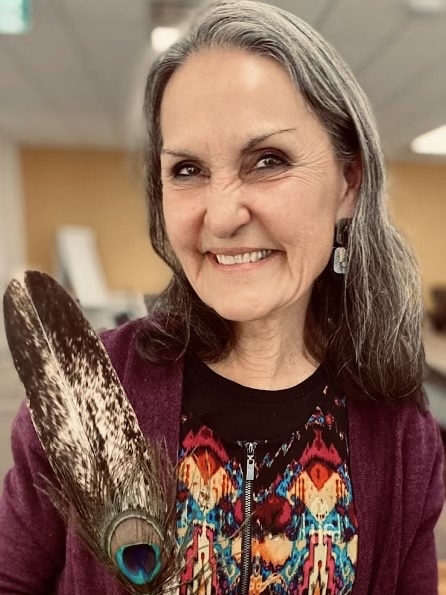The portrayal of Native Americans in media and films has long been marred by stereotypes that misrepresent their cultures, perpetuating misconceptions that resonate through generations. These simplistic representations often reduce rich heritages to mere caricatures, thus undermining the complex identities of Native peoples. In contemporary discourse, there exists a burgeoning consciousness regarding the necessity to address and rectify these portrayals, heralding a transformative potential rooted in the teachings of unity and justice. Such teachings encourage not only a re-evaluation of cultural narratives but also inspire a commitment to authenticity and respect in the representation of diverse communities.
At the heart of this dialogue is an imperative to comprehend the implications of cultural misrepresentation. The Bahá’í teachings emphasize the oneness of humanity and the need for harmony among diverse cultures. This principle challenges artists, filmmakers, and media creators to transcend superficial depictions and engage with the intrinsic human experience that shapes Indigenous identities. The responsibility lies heavily upon media professionals to foster understanding through nuanced storytelling that honors the heritage and lived experiences of Native American communities.
The inertia of negative stereotypes can often be traced to historical contexts in which Native people were depicted as the ‘other.’ Early films frequently portrayed Native Americans in binary oppositions: the noble savage or the bloodthirsty warrior. This binary thinking not only distorts reality but also serves to alienate Native communities from mainstream society. A shift in perspective, fueled by holistic portrayals, is essential in dismantling these long-standing myths. Bahá’í principles advocate for a deepened appreciation of cultural multiplicity, suggesting that media narratives should reflect this vibrant tapestry rather than resort to reductive clichés.
In recent years, there has emerged a significant movement within cinema that seeks to amplify Indigenous voices and stories. Films created by Native artists bring forth a crucial counter-narrative that invites audiences to engage in a more authentic dialogue about the struggles and triumphs of Indigenous peoples. Such cinematic works resoundingly challenge the status quo by harnessing the power of personal narrative. For instance, through storytelling that weaves together individual experiences with collective histories, these films foster a connection that engenders empathy and understanding among viewers.
The proliferation of platforms for Indigenous storytelling has been instrumental in reshaping public perception. Streaming services and independent venues increasingly showcase Native filmmakers, allowing films that transcend stereotypical portrayals to reach wider audiences. This democratization of media presents a unique opportunity for a new generation of Indigenous artists to redefine their identities on their own terms. A shift from consumer to creator is pivotal here, as it allows Native voices to lead the narrative, ensuring authenticity and cultural integrity are upheld.
Moreover, the role of education within these discussions cannot be overstated. The Bahá’í teachings highlight the importance of knowledge as a precursor to transformation. Educational initiatives that illuminate the histories, languages, and cultures of Indigenous peoples serve to combat ignorance and foster seasoned understanding. Engaging curricula that include Indigenous perspectives are essential in altering the perceptions of younger generations, promoting respect and appreciation for the myriad contributions of Native cultures. Programs that invite students to explore Indigenous literature, film, and art encourage critical thinking about representation and the consequences of misrepresentation.
Additionally, community-driven projects are emerging as powerful catalysts for change. Collaborative endeavors between filmmakers and Native communities often result in authentic portrayals grounded in cultural relevance. These partnerships nurture an environment where creativity flourishes, and genuine cultural expression is celebrated. By prioritizing inclusivity in the creative process, the stories yielded not only captivate but also educate, allowing audiences to glean insights into the rich tapestry of Native American life.
The engagement of audiences is a vital aspect of this evolutionary process. Viewers today are increasingly aware of the impact of media representations, prompting a demand for narratives that reflect accuracy and depth. This sociocultural shift compels filmmakers to be more conscientious in their storytelling, pushing beyond stereotypical confines. The collective power of informed and empathetic viewers can drive the industry toward a more equitable portrayal of all cultures, emphasizing the Bahá’í belief in the oneness of humanity.
Ultimately, as the landscape of media and film evolves, so too must the representations within it. The iterative process of deconstructing stereotypes and amplifying marginalized voices requires both courage and commitment. Just as Bahá’í teachings advocate for justice and equity in all walks of life, those engaged in the media industry are called to champion these values within their works, thus fostering a cultural environment where diversity is not merely acknowledged but celebrated. Addressing Native American portrayals in media is not just an artistic endeavor; it is a social imperative that promises to reshape narratives, nourish understanding, and, ultimately, unify humanity.
As we look forward, the commitment to nurturing authentic portrayals of Indigenous peoples in media promises a rich future enriched by shared understanding and cooperation. Employing the power of storytelling to transcend stereotypes, we can illuminate the profound realities of Native American lives, encouraging curiosity and sparking meaningful exchanges across cultural divides.
